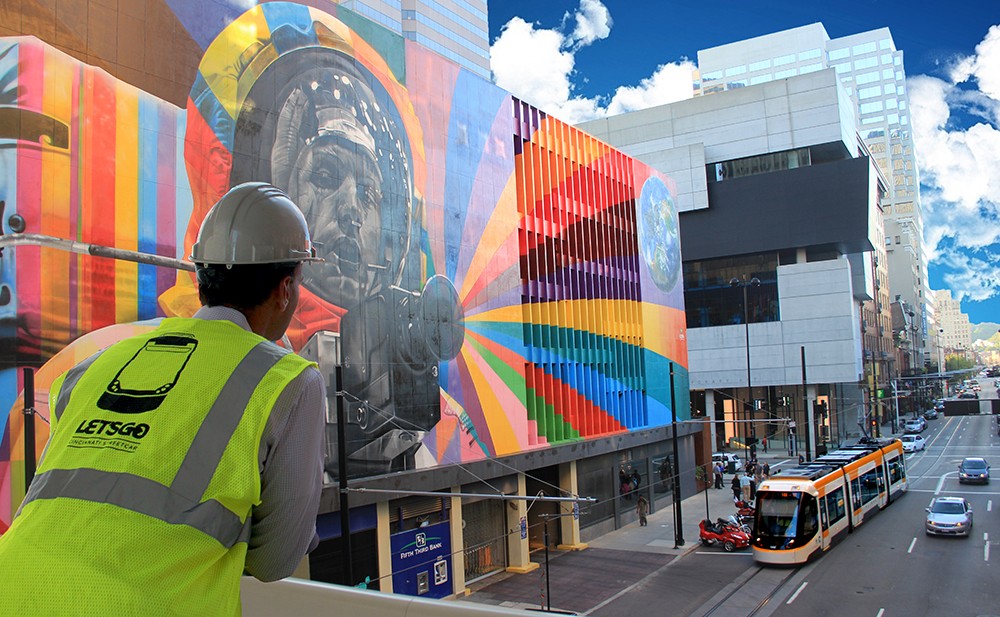University of Cincinnati alumnus Mike Prus watches the Cincinnati streetcar pass by the Contemporary Arts Center, downtown on Walnut and Sixth streets ahead of its public opening on Sept. 9, 2016. photos/Paige E. Malott
Building the Cincinnati streetcar
UC Lindner College of Business MBA continues family's journey down streets of his hometown
by Paige E. Malott
513-556-6319
Sept. 9, 2016
The day after Thanksgiving 2012, a time when most families were finishing up leftover turkey and beginning their holiday shopping, Mike Prus sat quietly at his desk thumbing through a call for proposals for what would become a high-profile infrastructure project with national recognition: the Cincinnati streetcar, now known as the Cincinnati Bell Connector.
A 3.6-mile route through downtown and Over-The-Rhine was to break ground in early 2013 and feature 18 stations in addition to a maintenance facility to house and service the light rail vehicles. As vice president of Prus Construction, Prus, M (Bus) '00, led the application for the bid process and assembled a local executive team. The joint venture, Messer-Prus-Delta (MPD), included a partnership with Messer Construction and Delta Railroad.
Nearly four years later as streetcar service opens to the public on Sept. 9, 2016, Prus has the unique perspective of having seen the project evolve from start to finish. The five-vehicle system will run 18 hours a day, 365 days a year, and anticipates carrying thousands of passengers daily. An economic development accelerator, officials say the streetcar is credited with attracting businesses and new home buyers to Over-The-Rhine and downtown contributing to the first population increase in the urban core since 1950.
“Our mission at Prus Construction is to experience the excitement of building and improving our community,” Prus explains. “The streetcar project is a great representation of that mission. We are proud that we have played such an integral part in a project of this magnitude.”
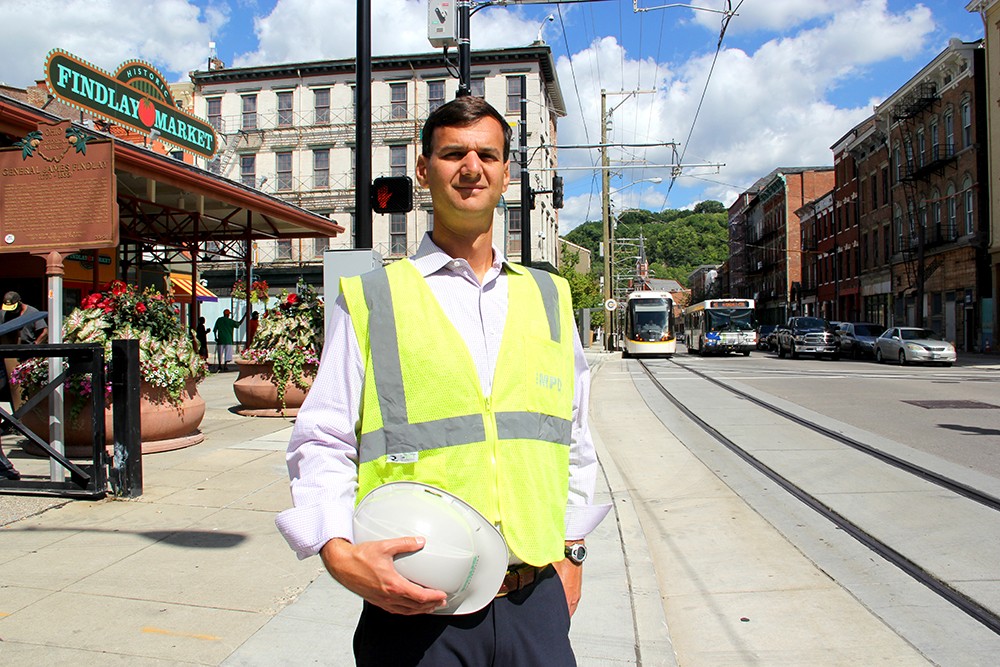
A streetcar begins its route as Mike Prus stands near Findlay Market on Race Street. photo/Paige E. Malott
Humble beginnings
Prus Construction was founded in 1888 by Herman Prus, Mike’s great-great-grandfather. A German immigrant, he drove a horse and buggy team through the streets of Cincinnati while completing such residential projects as building small foundations, porches and pouring sidewalks. Over the years, the team continued its mastery in concrete while expanding into streetscape renovations, bridges, installing underground utilities and developing sustainable infrastructure.
“We have had the pleasure of working on countless iconic projects throughout Cincinnati,” notes Prus. Citizens make use of Prus infrastructure on a regular basis when they visit Smale Riverfront Park, watch fireworks from Serpentine Wall, travel the 12th Street Bridge in Covington or go shopping at Liberty Center in Liberty Township.
“I am proud to represent the fifth generation in the family business,” smiles Prus, who has served in a variety of roles since he began his tenure in construction as a teenager. Through high school and college, he pulled nails and stacked form lumber in the facility yard. Later, he joined the workcrews as a laborer.
Prus eventually became a project manager, then grew into his current role as vice president. “We are blessed to have so many good people in our organization," he says. "My role as vice president is more supportive. I attempt to stay out of the way while filling gaps and focusing on operations and business development.”
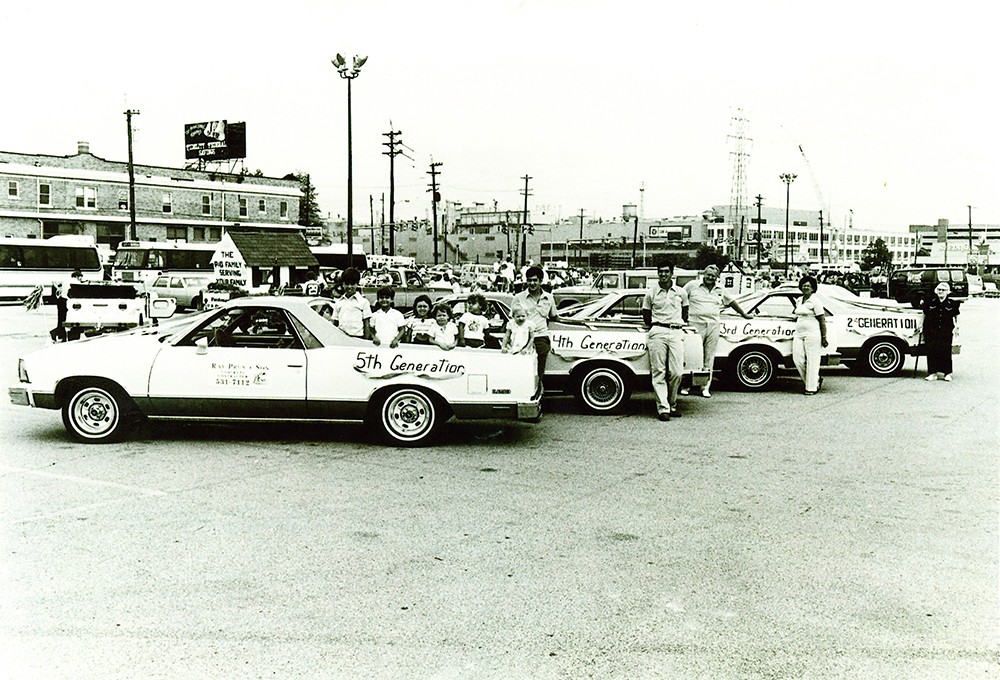
Mike Prus, pictured in the Fifth Generation car, showing off multiple generations of the Prus family business.
Working his way up, Prus realized continuing his education would complement his career path. He completed his undergraduate degree at UC studying Construction Management at the College of Applied Science, now part of the College of Engineering and Applied Science.
“During my senior year, I began contemplating pursuing an MBA to increase my business knowledge. I decided it would be beneficial to have a deeper business understanding prior to returning to Prus Construction.”
Delving into his new curriculum just five days after receiving his bachelor’s degree, Prus enrolled in the 12-month accelerated MBA program at the Lindner College of Business. An immersive course, the 12-month MBA tailors academics for students in an established career field, differing from the traditional MBA program which pairs classroom knowledge with co-op rotations. Prus notes the relevance of his studies to his role in the streetcar project: “Operations management, finance, budgeting and legalities of forming joint ventures were all things that were covered as part of the MBA coursework.”
Looking back at his time at UC, he recalls, “It was a fantastic experience for me. I was able to come away from college with a great understanding of business and the construction field. I am still very close to many of my classmates, including my bride, Kim, who I met through the MBA program.”
Cementing success
As an executive for MPD, Prus supervised the start-up team that managed eight subcontractor units who were hired to each perform a specific skillset for the multi-million dollar contract. What started with around 20 laborers quickly grew to employ hundreds from across the region.
Construction of the streetcar route started in mid-2013 on Elm Street in front of Music Hall. Over the next two years, crews continued north to the maintenance facility site at Henry Street, pivoting southbound on Race Street to Washington Park and 12th Street completing the Over-The-Rhine loop. Efforts then proceeded to the next segment: Downtown.
Crews began by excavating the roadway and upgrading aging utilities underneath. Rebar was laid, rails were placed, and concrete poured. Station platforms, shelters, and ticket machines were erected. Catenary poles were raised, connected to power substations, and strung with miles of copper wire to provide electric current to the rail vehicles. A state-of-the-art maintenance facility was built on the site of two abandoned factories in Over-The-Rhine, complete with a yard to house all five streetcars. In addition to building the transit system, the MPD contract included a curb-to-curb overhaul.
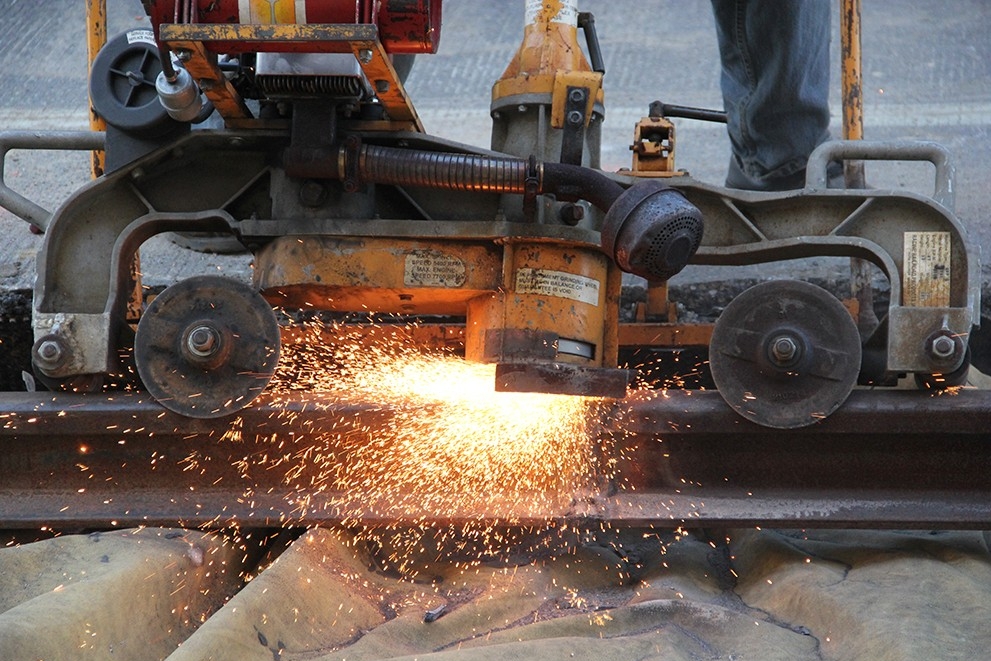
Completing the route, the last two rails of the 3.6 mile system were welded together at The Banks, near Great American Ball Park on Oct. 16, 2015. photos/Paige E. Malott
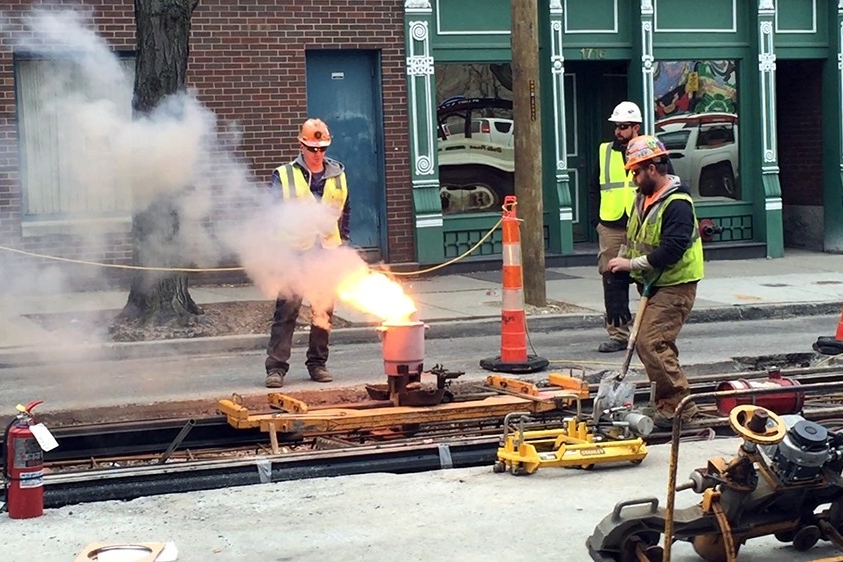
Crews use a process known as thermite welding to connect two steel rails together. Shown is the final weld in the Over-The-Rhine segment.

The final section of rail in the 3.6 mile route is secured in place at The Banks near Great American Ball Park Oct. 16, 2015.
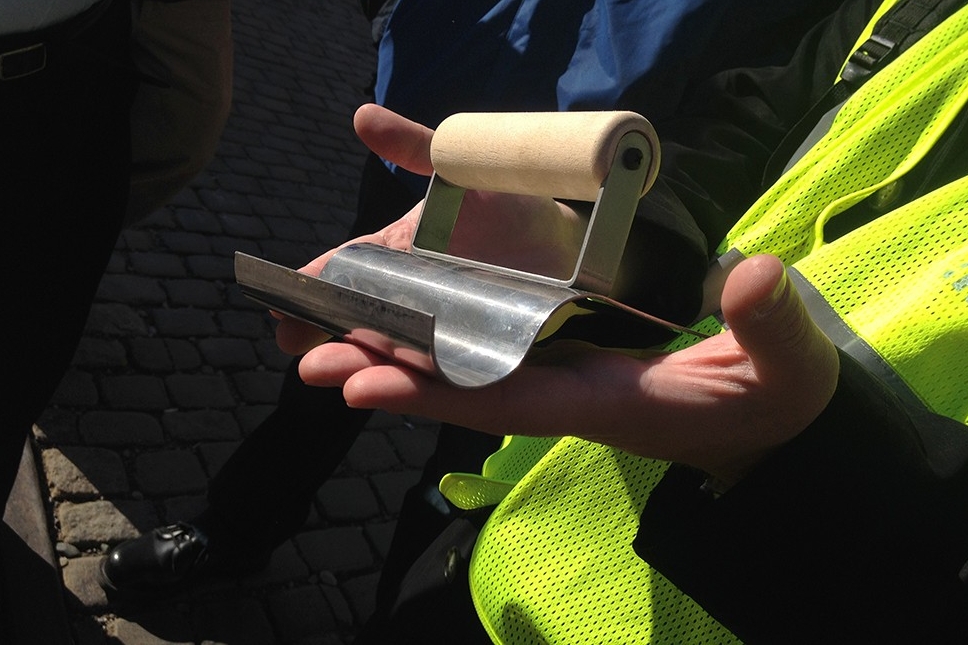
A custom flangeway was designed to fit the wheel of the streetcar vehicle. This tool was created by MPD to shape wet concrete into the form of the flangeway.
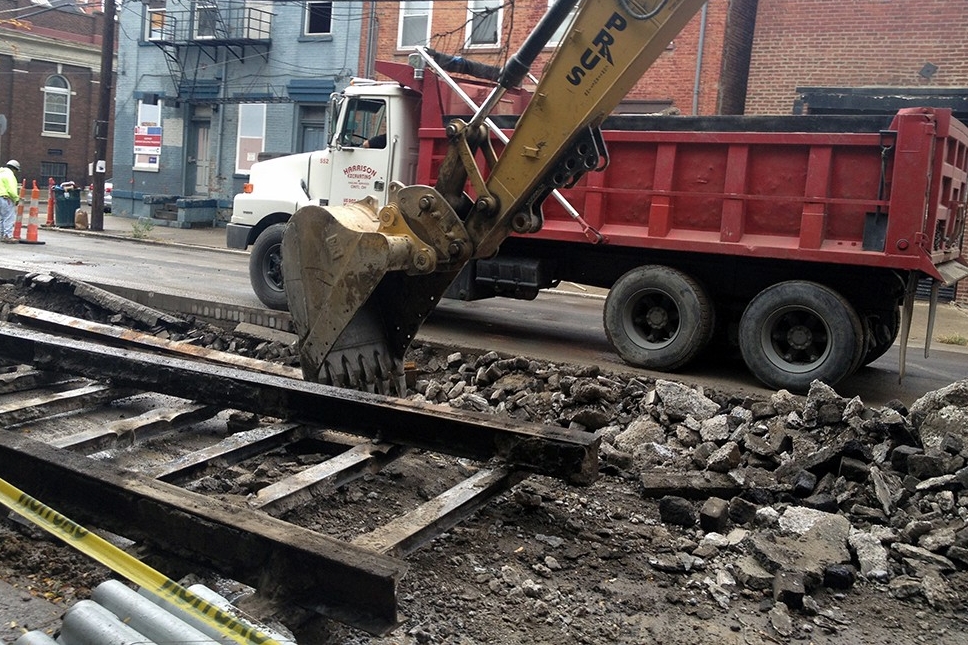
While excavating the pavement, Prus Construction crews uncover rail from the 1950s on Elm Street near Music Hall.
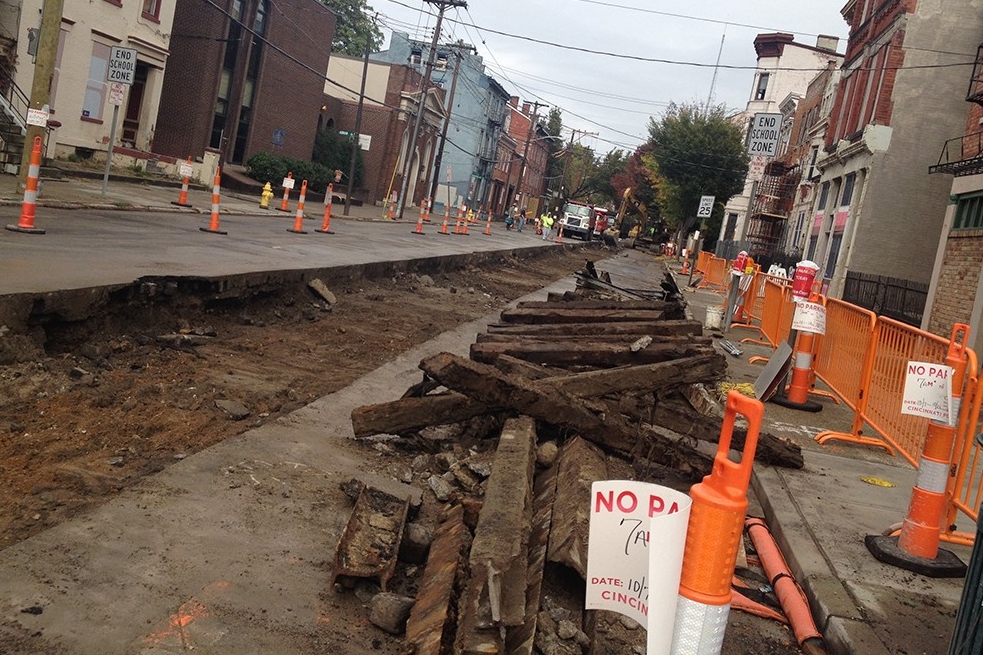
Deteriorated rail leftover from the previous streetcars from the 1950s is removed from the 1400 block of Elm Street, near Music Hall.
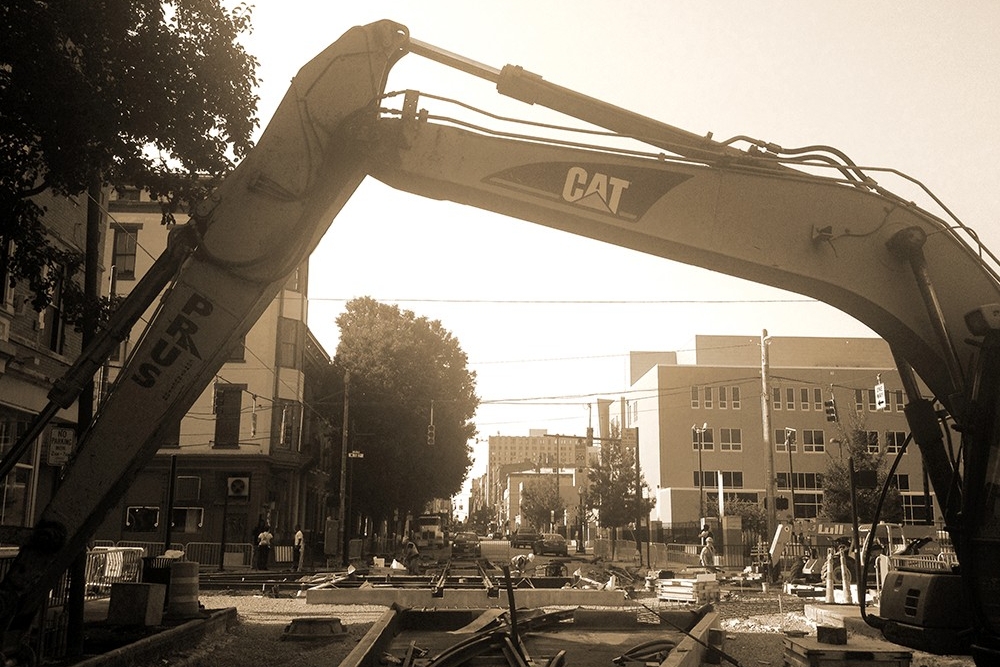
A Prus excavator bridges the trackwork for the diamond at 12th and Race Streets near Washington Park.
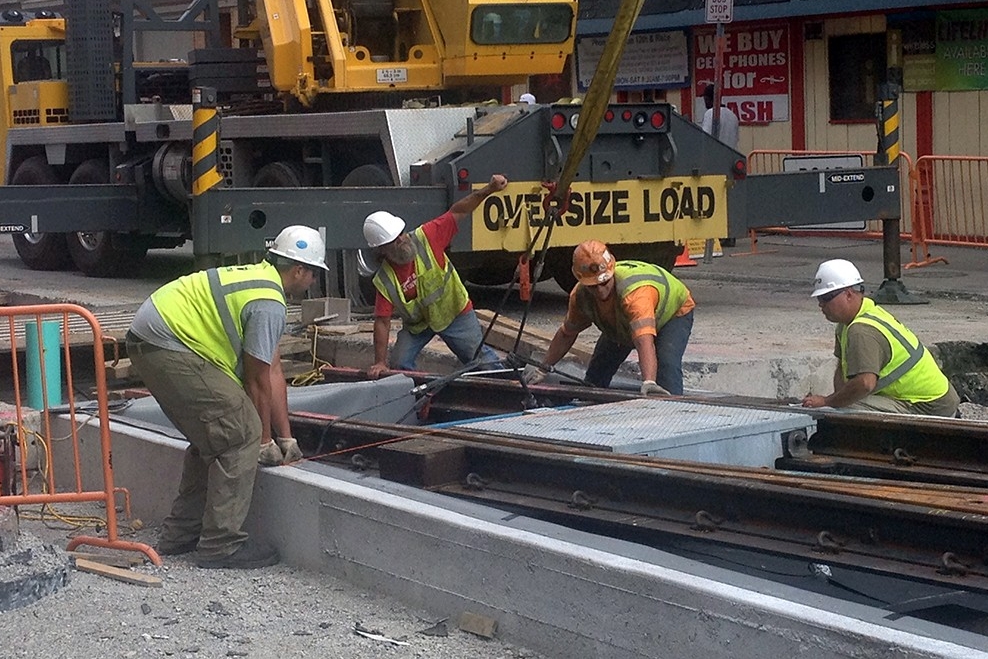
A segment of rail is lowered into the intersection at 12th and Race Streets in Over-The-Rhine as part of a complex design that allows streetcars to switch direction.
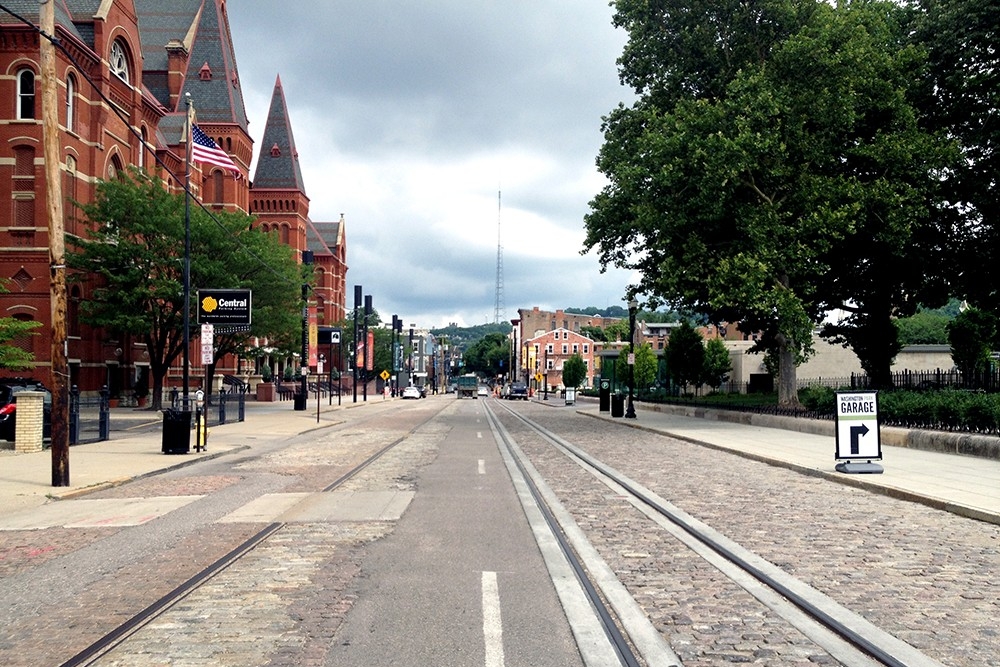
Cobblestone roadway on Elm Street reveals old versus new. The section on the right was rehabilitated by Prus Construction during installation of the streetcar track.
“The rehabilitation contract put so many folks to work with the improvements being made to the public right-of-way,” Prus elaborated. Obsolete, leaking sewage pipes were discovered and replaced, ground stabilized, uneven sidewalks were reconstructed. Old curbs that were inaccessible to people with mobility limitations were outfitted to be ADA compliant. New traffic signals were installed, crosswalks repaired, lanes restriped, and the entire 3.6 miles of roadway received a fresh paving of asphalt.
On Oct. 16, 2015, the final rail was welded into place at The Banks near Great American Ball Park. The occasion drew a crowd of citizen advocates, transit leaders and politicians, but for Prus, the defining moment came two weeks later. Rolling in on a Friday evening on a flatbed trailer from Elmira, New York, the first streetcar vehicle descended slowly onto the track on the northern edge of Race Street near Findlay Market. The same crowd had gathered, this time joined by dozens more onlookers including Prus and his family. His children and father by his side, three generations of Prus witnessed the monumental project coming to fruition.
“When that vehicle fit perfectly onto the tracks, I thought, ‘We did it. It’s here, and it’s going to work,’" he says. "For us to say that we were part of such a tremendous project in the region is really exciting. The Cincinnati streetcar has become a part of Prus Construction’s legacy.”

